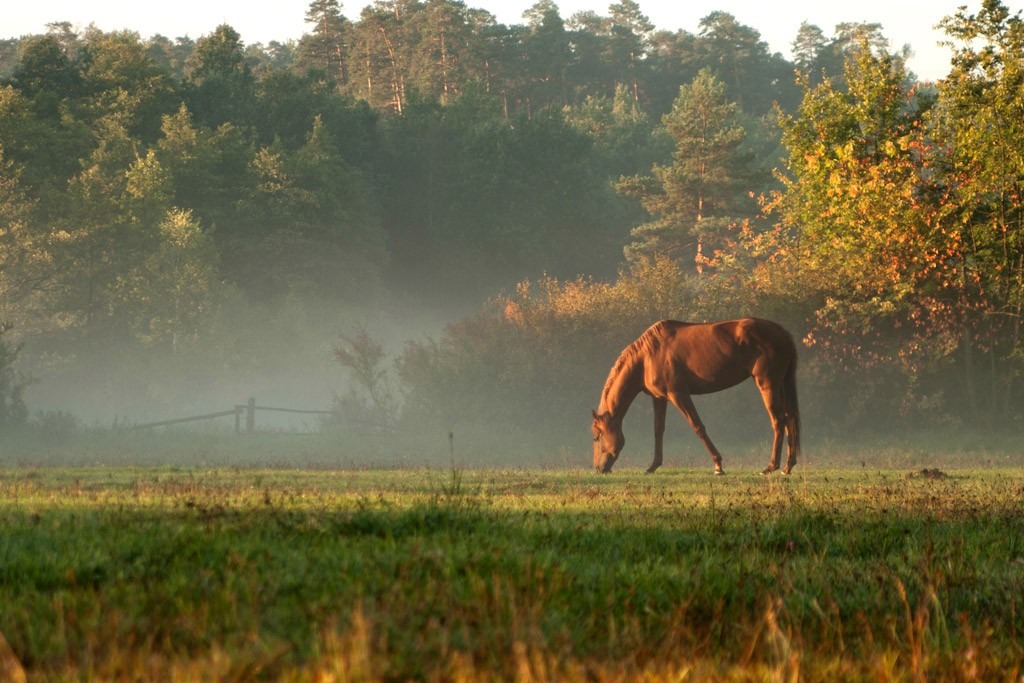Build a Run-In Shed or Loafing Shed
Whether you’re planning a run-in shed for quick shelter during daily turnout, as a temporary stable until your barn is built, or to serve as the main shelter for horses who spend most of their time in pasture, a post frame barn-style run-in shed is one of the most basic and useful structures on the farm. Just ask any experienced post frame horse barn builder, and they’ll tell you why!
Run-in or “loafing” sheds are three-sided structures that provide shelter from hot sun, wind and wet weather for animals in pasture. They can be as simple or elaborate as you want. Some horse owners build in storage areas and feeding stations, making them more of a hybrid barn, while others are little more than a roof set on posts to provide shade. The important part from the horse’s perspective is that they can come and go as they please.
Pasture is the healthiest situation for your horse, providing much needed exercise and grass. Horses turned out 24/7 with proper shelter have a much lower incidence of colic, ulcers, joint issues and respiratory issues. A run-in shelter gives pastured horses the best of both worlds, allowing them to self-regulate a bit when the weather is extreme.

Horses that get a lot of turnout time are healthier.
When planning your run-in shed, consider the following:
Site
The ideal site for your run-in shed is basically a high, dry spot, preferably one where your horses already like to hang out. You’ll want to add a built-up foundation of packed stone or sand to ensure drainage away from the shed, since it will see a lot of traffic. You’ll also need to monitor the ground conditions and maintain the foundation regularly, replacing it at least annually to ensure dry footing.
Orientation
Your loafing shed should be oriented to block sun in summer and cold winds, which usually come from the west and north, the rest of the year. The ultimate orientation will be a compromise between the two.
Size
The average run-in shed is about 12 to 14 feet deep, with about 12 running feet for every 1-2 horses. Basically that’s the size of a standard stall for each 1-2 horses. Another common measure is 100 square feet for the first horse and 50 square feet for each additional horse. Exactly how much space you need will depend on the size and habits of your horses and your herd dynamics. If the space is too tight, the alpha horse may force out the low horses in the herd.
Access
Sometimes it makes sense to divide a larger loafing shed into smaller compartments with a full or ¾ dividing wall. This can help prevent fights and discourage the alpha horse from evicting the low horse. It also gives you flexibility in moving your horses around and separating them when needed. Many horse owners will arrange the shed to open onto one or more paddocks with flexible pipe gates.
Eaves and Gutters
You can extend the “dry zone” provided by your shed by adding eaves and gutters on one or both sides. Both will dramatically extend the life of your footing and your structure by keeping water away from it.
Material
Run-ins can be built with wood or metal, but metal will require a wooden kick wall of 4-6 feet inside to protect horses against lacerations. Any place where horses are exposed to metal siding poses a risk of severe injury.

Herd dynamics will help determine how big your run-in needs to be.
Add-ons
It’s easy to add amenities such as a feed storage area to your run-in shed. One common configuration is to create a feed area between two large run-ins. Some horse owners also store medicine, tack and grooming supplies in the run-in.
A Horse’s Idea of Shelter
While they may not be as appealing to our human sensibilities, from a horse’s perspective, a run-in shed is a great house, providing plenty of creature comforts when the weather gets ugly. Run-in sheds are very economical to build and perfect for post frame barn construction.
Ready to add a run-in to your pastures? Contact our expert equine designers and we’ll help you plan a successful shelter that will give your horses the best of both worlds season after season.
